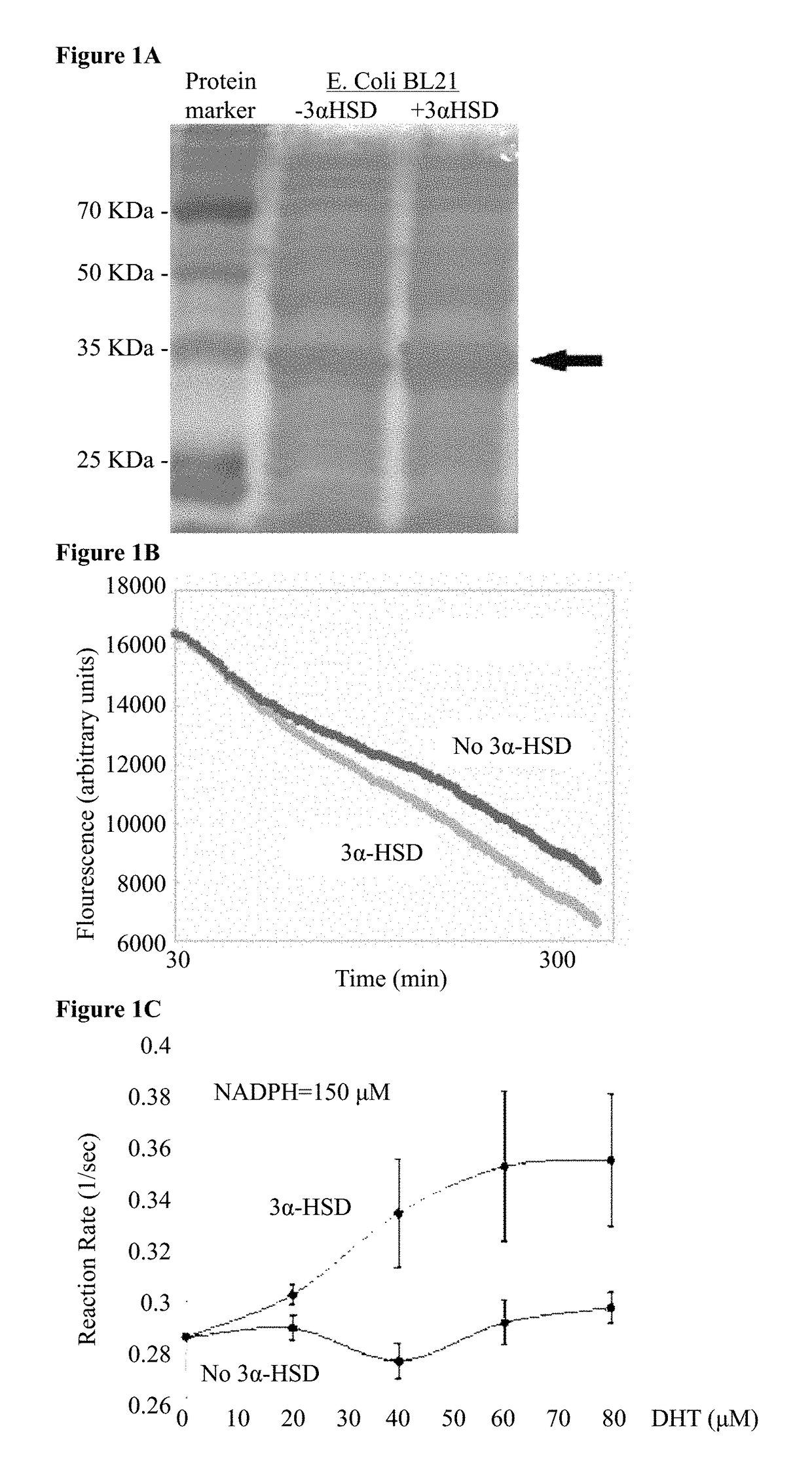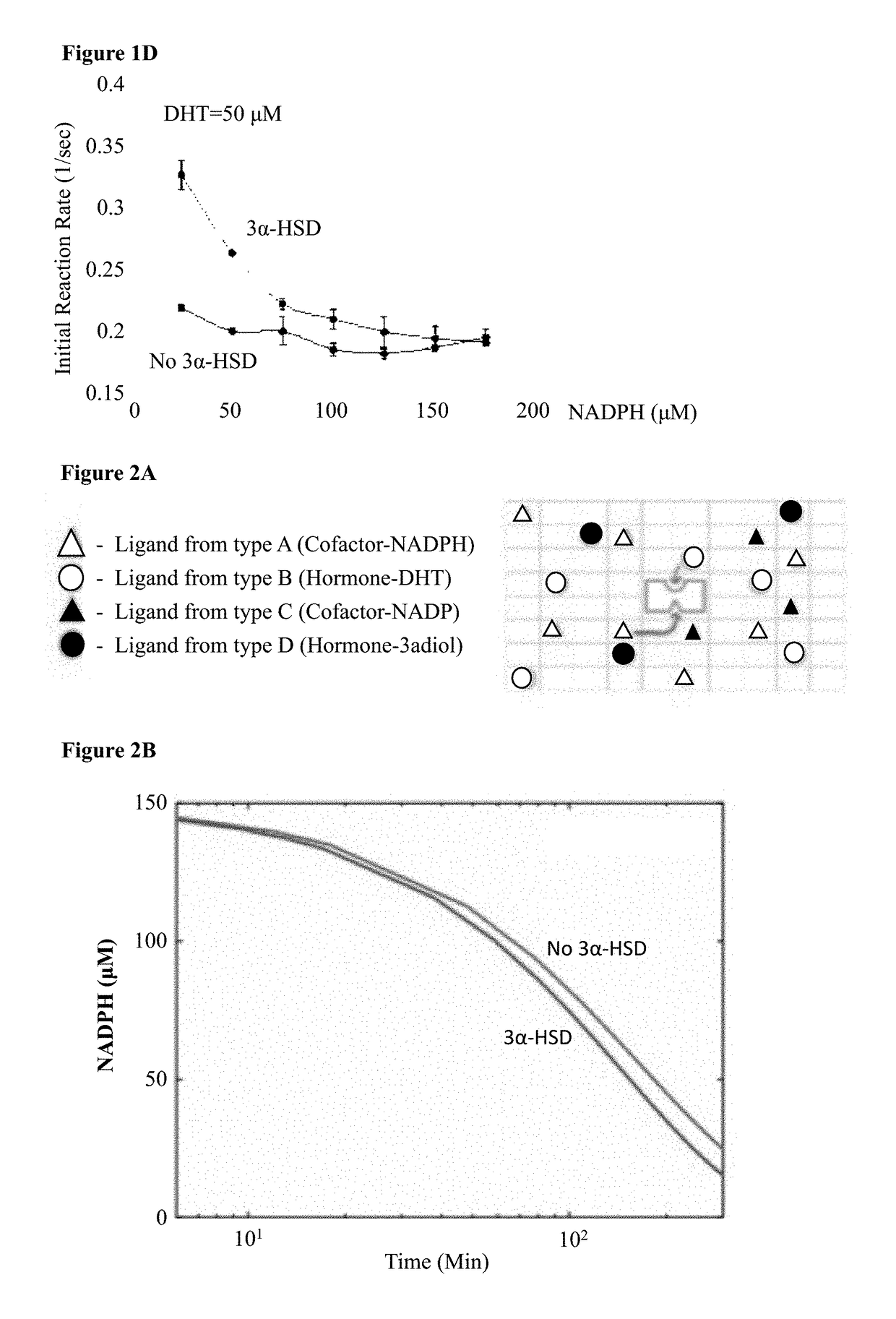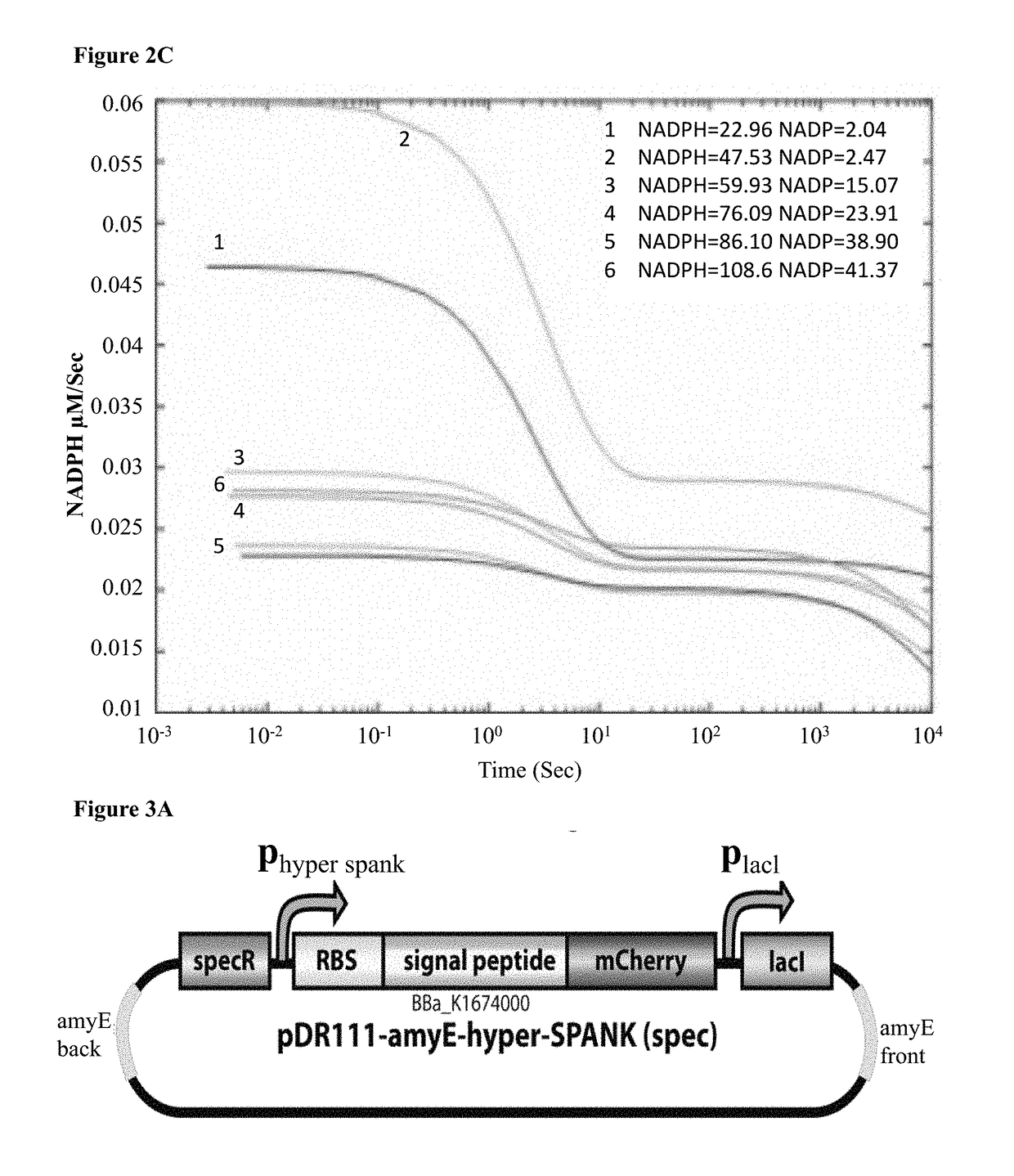Composition and method for treating androgen-dependent disorders
a technology of androgen and compound, applied in the field of microorganisms, can solve the problems of reducing oxygen supply, thinning hair, and blood flow blockage, and achieve the effect of increasing the activity of dht reductas
- Summary
- Abstract
- Description
- Claims
- Application Information
AI Technical Summary
Benefits of technology
Problems solved by technology
Method used
Image
Examples
example 1
AKR1C9 Expression and 3α-HSD Activity in E. Coli
[0248]In order to quantify the 3α-HSD enzymatic activity (FIG. 1A), one would ideally track the degradation of its substrate DHT. However, since there is no known assay for DHT detection, 3α-HSD enzymatic activity was assayed by tracking the degradation of its cofactor, NADPH. NADPH concentration can be quantified using fluorescence due to its excitation and emission curves which peak at 340 nm and at 460 nm respectively. To get an estimate for the kinetics of 3α-HSD enzymatic reaction, the effect of increasing the initial substrate concentration (DHT) was examined. E. coli BL21 cells containing the AKR1C9 gene construct were sonicated after two hours of induction with IPTG, 150 μM NADPH was added to the lysates in a 96-wells plate, and inserted into a plate reader pre-heated to 37° C. for 30 minutes to allow for result stabilization (37° C. is in the optimal temperature range for the enzyme activity). In previous experiments, fluctua...
example 2
Modeling 3α-HSD Kinetics and NADPH Degradation
[0251]NADPH degradation was modeled based on a simple two-ligand-receptor thermodynamic model coupled to a rate equation mechanism, where the receptor has two ligand binding pockets. This sort of model has been used in the past to model enzymatic reactions, and is adequate for exploring the phase space of behaviors for co-factor based catalysis of DHT by 3α-HSD.
[0252]In brief, the model posits a four-state ligand-receptor system, where the only enzymatically active state is the one with the receptor bound by both ligand and co-factor (See FIG. 2A for model schematic). Using this model, equations for DHT and NADPH degradation were generated. These equations are then used to model the evolution of DHT and NADPH concentration over time as the enzymatic reaction proceeds. FIG. 2B presents the model's prediction for NADPH concentration as a function of time using a set of parameters obtained from the literature. NADPH naturally degrades to NA...
example 3
Expression and Secretion of mCherry Reporter Gene in B. Subtilis
[0254]Next, the option of directing secretion of 3α-HSD enzyme using one of B. subtilis' well-characterized secretion systems was explored. In these systems, the bacteria typically encode a secretion signal peptide (SP) directly up-stream of the target gene, hence producing a chimeric polypeptide with the SP fused to the N-terminus of the secreted enzyme. The signal peptide associated with gene aprE was used. AprE encodes an extracellular alkaline-serine protease (subtilisin E), which is the most abundant protease secreted to the medium in wildtype B. subtilis. By fusing only the portion of aprE which encodes for the secretion peptide to the 3α-HSD gene, the chimeric protein product should be recognized by the secretion system of the protease and secreted into the extracellular medium at a relatively high titer. This design effectively allows “hijacking” the subtilisin E secretion pathway, for the purpose of generating...
PUM
 Login to View More
Login to View More Abstract
Description
Claims
Application Information
 Login to View More
Login to View More - R&D
- Intellectual Property
- Life Sciences
- Materials
- Tech Scout
- Unparalleled Data Quality
- Higher Quality Content
- 60% Fewer Hallucinations
Browse by: Latest US Patents, China's latest patents, Technical Efficacy Thesaurus, Application Domain, Technology Topic, Popular Technical Reports.
© 2025 PatSnap. All rights reserved.Legal|Privacy policy|Modern Slavery Act Transparency Statement|Sitemap|About US| Contact US: help@patsnap.com



